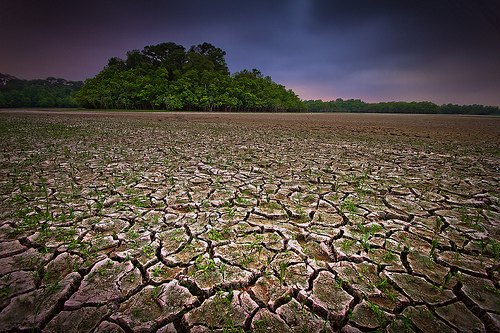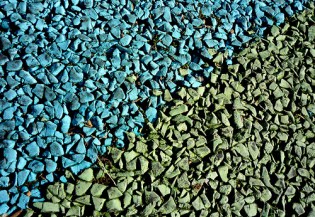Send your question to Umbra!
Q. Dear Umbra,
With spring just around the corner, I’m wondering: What’s the scoop on rubber mulch from recycled tires? It’s often touted by the companies that produce it as “eco-friendly,” but is that true? Is there any risk of chemicals leaching from the rubber into the soil?
Danica G.
Kensington, Md.
A. Dearest Danica,
Happy almost spring! As with so many of these thorny eco-dilemmas, the answer depends upon whom you ask. Passionate people on both sides of the mulch aisle will try to convince you that this product is the best or worst investment you will ever make. Happily for both of us, you asked me, arbiter of eco-sanity.
I love mulch, which keeps our soil healthy and happy while elbowing out pesky weeds, and I’m afraid I’m going to be rigid on this topic. The eco-friendliest mulch is the kind made from natural materials: leaves, compost, bark, and so forth. This kind of mulch does not need to market itself as eco-friendly, because its qualifications as such are naturally apparent. In fact, if it did have a marketing campaign, it would probably have to term itself eco-passionate or eco-intimate. Eco-suitorly?
Rubber mulch, on the other hand, is not so eco, nor is it particularly friendly. In fact, it poses some very real concerns — enough to give anyone pause before skidding in its direction.
Most recycled-rubber mulch is made from old tires, as you say. The increasing popularity of this product in athletic facilities, gardens, paths, and playgrounds (even under the White House swingset!) is viewed by some as a victory for recycling, since Americans cast off 290 million tires a year. The rubber industry is happy to be able to grind some up and resell them, the EPA is happy to not have them taking up space in our landfills, and some consumers are happy to put the resulting durable little nuggets — which are often brightly colored — to use.
However. Both proponents and opponents of this material agree that it contains all manner of potentially hazardous substances, including heavy metals such as zinc, cadmium, and lead; known carcinogens with fun names like butylated hydroxyanisole (claims to fame: “recognized carcinogen, suspected endocrine toxicant, gastrointestinal toxicant, immunotoxicant, neurotoxicant, skin and sense-organ toxicant”); and VOCs, or volatile organic compounds, including naphthalene and benzene.
The divisive question is: How much of this stuff leaches into our soil and water or offgasses into our air, causing harm to natural and human health? Officials from the EPA and from environmental agencies in California [PDF], Connecticut, and New York [PDF] have studied the rubber “crumbs” used in playgrounds and playing fields, and concluded that, while they can leach chemicals into groundwater, they don’t present an alarming public-health issue for users of these facilities. That’s assuming, of course, that you’re comfortable with the phrase “acceptable cancer risk.” I’m not fearmongering, I’m just always amazed at the things we are willing to accept.
Other experts are less sanguine. The Connecticut-based nonprofit Environment and Human Health, Inc., has assembled a thorough overview of rubber-mulch health concerns, and Linda Chalker-Scott, an urban horticulturist at Washington State University, pulls no punches [PDF]: “It is abundantly clear from the scientific literature that rubber should not be used as a landscape amendment or mulch. There is no question that toxic substances leach from rubber as it degrades, contaminating the soil, landscape plants, and associated aquatic systems. While recycling waste tires is an important issue to address, it is not a solution to simply move the problem to our landscapes and surface waters.”
I should also note, if you’re looking at mulch options, that some commercial wood chips are made from ground-up pallets and other industrial lumber, and can contain [PDF] arsenic, formaldehyde, and other nasties. If you choose wood chips, look for those that come from downed or pruned trees. You can find out more about mulch from our friends at Cornell — then hit up your local nursery or Master Gardeners to learn what’s best for your Kensington palace.
Eco-passionately,
Umbra




